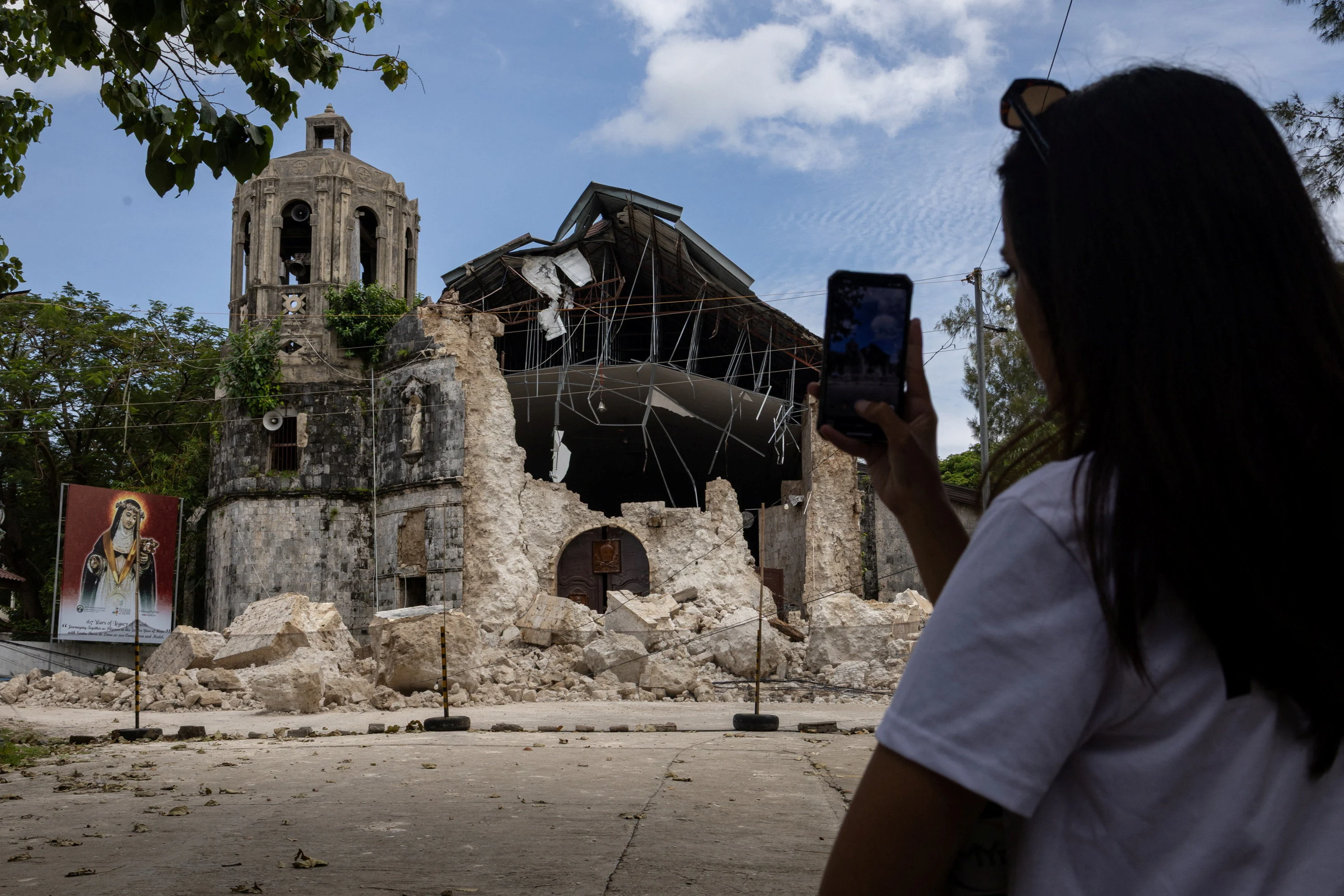By Sam Beltran
Copyright scmp

As the Philippines grapples with the fallout of a deadly earthquake and two destructive typhoons in less than a fortnight, analysts have criticised officials for their poor disaster management, comparing the damage with the flaws exposed by the ongoing flood-control scandal.
The latest disasters have highlighted shortcomings ranging from weak enforcement of building codes to chronic underfunding of related scientific programmes, according to the analysts.
Those weaknesses were on full display when two successive typhoons unleashed flooding and landslides across Luzon and Visayas last month, leading to dozens dead and thousands evacuating their homes.
The Philippines was still reeling from these disasters when a magnitude 6.9 earthquake hit its central region on Tuesday, toppling homes and reducing centuries-old churches to rubble. At least 72 people were confirmed dead and nearly 300 were injured, making it the country’s deadliest quake in more than a decade.
The epicentre was located just 21km (13 miles) northeast of Bogo on Cebu island. With the epicentre’s shallow depth of 5km, seismic energy triggered by the quake had less distance to travel, resulting in more intense shaking and heavier damage.
In the town of San Remigio, part of a sports complex collapsed during a basketball game, killing three spectators. A village where survivors of the 2013 super typhoon Haiyan lived in what were meant to be disaster-resilient homes reported 10 people dead.
Assistant Secretary Bernardo Rafaelito Alejandro IV, officer-in-charge of the Office of Civil Defence, said at a press conference on Tuesday that the high number of casualties was because the earthquake occurred at night.
“In the morning, we are all alert, but at night, when everyone is asleep, it takes time for us to react,” he said.
On Thursday, the country’s disaster risk reduction and management council declared the search operations complete with zero missing persons, as authorities shifted their focus to providing support for those injured and displaced.
President Ferdinand Marcos Jnr visited Cebu on Thursday and announced plans to construct a tent city to house residents of 600 destroyed homes and pledged to provide each displaced family 10,000 Philippine pesos (US$171) in aid.
Officials estimate that over 110,000 people across 42 communities in Cebu would need help to rebuild their homes and restore their livelihoods.
‘Where is the science?’
The Philippines’ geographical location makes it vulnerable to extreme natural hazards, such as earthquakes and tropical storms, according to experts.
Located on the Pacific “Ring of Fire”, a belt of seismic activity around the fringes of the Pacific basin, the country is also in the West Pacific Cyclone Basin, experiencing an average of 20 tropical storms and typhoons annually.
Observers, however, have pushed back against the idea that the Philippines is always at the mercy of nature.
“We are in the Pacific Ring of Fire, and we’re exposed to earthquake hazards. That’s something we should take advantage of … the earthquake per se does not kill,” said Mahar Lagmay, a geologist from the University of the Philippines and the executive director of Project NOAH, a disaster risk reduction and management programme that maps the country’s natural hazards.
Lagmay said that creating maps documenting disasters that the country was prone to would help in risk planning.
Ven Paolo Valenzuela, a research fellow at Singapore Management University’s College of Integrative Studies who is an expert in climate change, said the Philippines could have been better prepared for the outcome of the latest disasters.
“Our ancestors and we have been surviving in this area for quite some time … These are not new risks,” Valenzuela said, adding that the country’s building code had been strengthened, particularly after a 7.8 magnitude earthquake on Luzon island in 1990, which killed over 1,600 people.
Calling natural disasters in the country “man-made,” Lagmay said substandard buildings might have led to a higher death toll in the latest earthquake.
Observers have blamed siloed decision-making, a lack of scientific basis in policy planning, and poor implementation for the country’s poor disaster management.
“When we say science-based approach, where is the science? I think we have missed that opportunity to engage the experts of state universities and colleges. We can do the science in tackling the adverse impact of climate change, in terms of its impact on agriculture, tourism, education, energy,” Lagmay said.
He added that the country would typically assess each natural disaster, such as typhoons and earthquakes, separately instead of treating them as interrelated.
“We should be looking at all of the hazards together … we should prepare and anticipate for the worst-case events, including climate change scenarios that are bigger than what we have experienced,” Lagmay said.
Analysts also refer to the flood control scandal as representative of the broader underlying issues regarding disaster management.
“There were collapsed buildings that could have been prevented because the building code emphasises that you design and construct a building according to the code, which can withstand that kind of ground shaking,” Lagmay said, referring to online photos showing the collapse of buildings that could be due to “structural failures”.
Valenzuela agreed, saying: “You would see newer buildings failing. To what extent were the building standards upheld? Who should be responsible for checking that these new buildings are actually up to standard?”
He added that local officials could use the inevitability of natural hazards in the Philippines to avoid accountability and for their personal benefit, pointing to corruption exposed by incomplete or “ghost” flood control projects.
Referring to the UN’s assessment that every US$1 invested in disaster prevention would lead to US$7 to US$8 saved in disaster response, Valenzuela said: “Has [the Philippines] been investing in that dollar? And once a disaster strikes, how sure are we that the US$8 is actually going towards proper response and building back better?”
A major challenge for the Philippines to tackle disaster planning was a lack of political continuity with regular changes at the highest levels, according to Valenzuela. The recent calamities were “a wake-up call to which the alarm went off a decade ago, but we kept hitting the snooze button”, he said.



